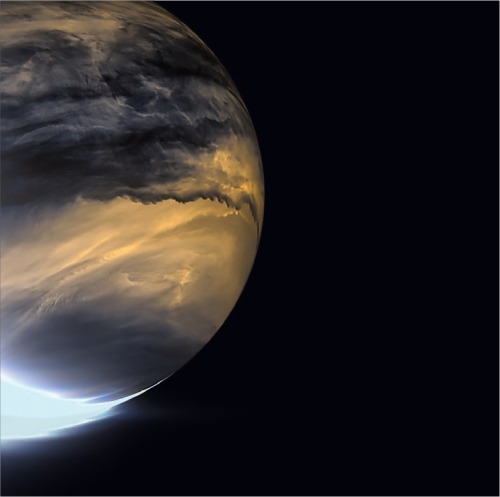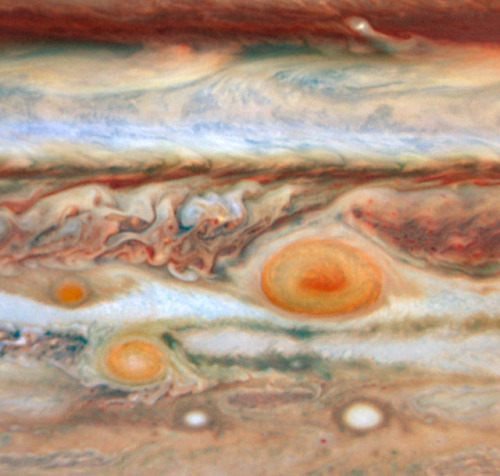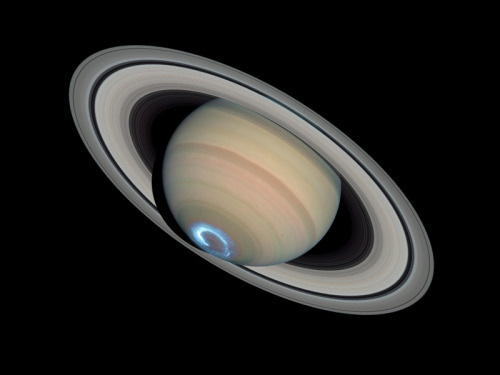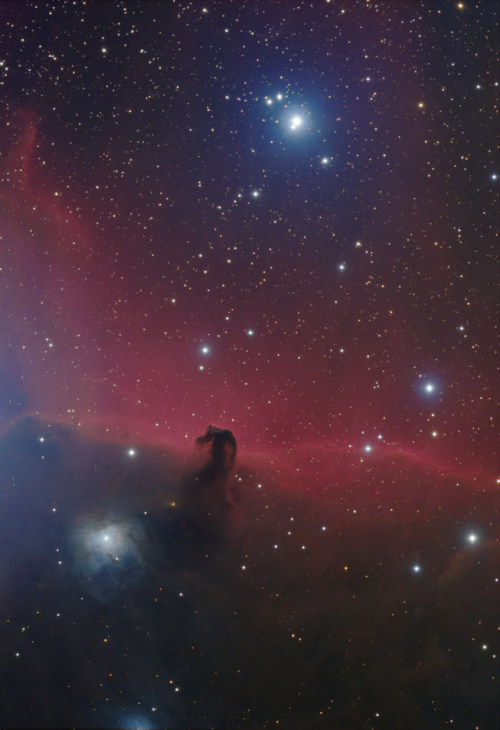Latest Posts by sidusglacies - Page 4

So much of fluid dynamics comes down to finding the right way to observe a flow. (Image credit: Expedition 59 Crew; via NASA Earth Observatory)
"Vorticity 3"
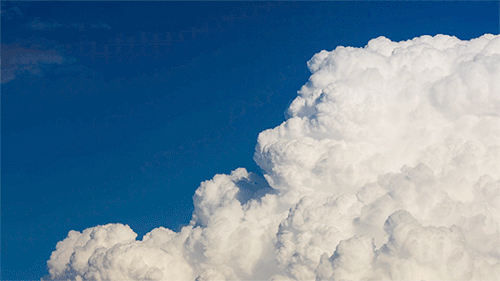
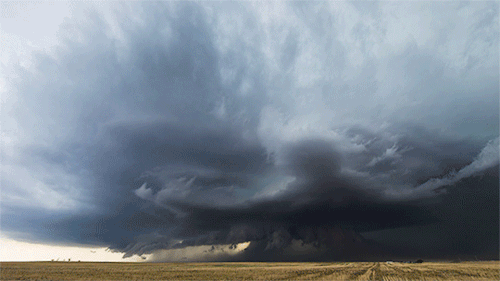
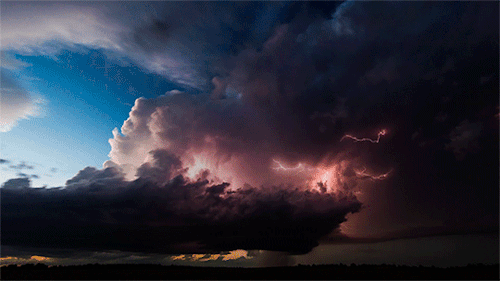
Mike Olbinski’s “Vorticity 3” is a stunning view of storm chasing in the American West. (Video and image credit: M. Olbinski) Read the full article



Mammatus clouds are a relatively rare and dramatic variety. (Image and video credit: M. Olbinski)
A rendering (Motion Edit) of a thunderstorm, based on a single photograph of a cumulonimbus cloud lit by a lighting, captured by night from an airliner at 40,000ft (12,000m), visualize a towering cumulus convection emerging from an altocumulus cloud cover.

An altocumulus cloud cover from below.
Polar Vortex Disruption Of January 2013
Satellite imagery of the disruption of the polar vortex in the northern hemisphere winter 2012-2013. The data show a major stratospheric sudden warming (SSW) event, linked to the distortion and reversal of the normal westerly (moving west to east) flow of air.
The large vortex (bright) over the North Atlantic Ocean at the start of the clip breaks up into several smaller vortices. This is due to air from lower latitudes (dark) becoming entrained in the polar flow, forming an anti-cyclonic region (dark, rotating clockwise) over Japan and eastern Russia, which disrupts the flow across the region.
Learn More About The Polar Vortex
Although dramatic, such events are not rare, occurring every two years on average. They can cause winds to reverse near the surface too, leading to very cold spells, especially in North America and Europe.
The brightness indicates the potential vorticity of the air, a measure of its rotation within its flow, at an altitude of 35 kilometers. Brighter regions have more vorticity.
A major SSW occurs when the temperatures in the stratosphere around the pole increases by at least 25 Kelvin within a week, causing the wind to change direction.
The data were gathered by the GEOS-5 satellite every hour between 15th December 2012 and 28th January 2013.
© GMAO / GSFC / NASA / Science Source
Video Clip SS2935432 (Supercell Thunderstorm, timelapse)
Timelapse footage of a Supercell thunderstorm with multiple lightning flashes.
A supercell is a large rotating storm system that often produces heavy rain, hail and sometimes tornadoes. The supercell is centred on a very powerful updraft, which lifts warm, moist air to high altitude. It cools as it rises, condensing and falling as precipitation.
The base of the cloud is marked by a shelf cloud extending forwards, and a low wall cloud at the updraft/downdraft interface. This supercell was filmed in Kansas, USA, in June 2015. Such storms are most common in this region in spring and early summer.
Supercells are often put into three classification types: Classic, Low-precipitation (LP), and High-precipitation (HP). LP supercells are usually found in climates that are more arid, such as the high plains of the United States, and HP supercells are most often found in moist climates.
Supercells can occur anywhere in the world under the right pre-existing weather conditions, but they are most common in the Great Plains of the United States in an area known as Tornado Alley and in the Tornado Corridor of Argentina, Uruguay and southern Brazil.
© Roger Hill / Science Source
love talking about weather. like yes girl the heat or lack thereof ❤️

AI USED TO SHOW HOW HYDROGEN BECOMES A METAL INSIDE GIANT PLANETS
Researchers have used a combination of AI and quantum mechanics to reveal how hydrogen gradually turns into a metal in giant planets.
Dense metallic hydrogen – a phase of hydrogen which behaves like an electrical conductor – makes up the interior of giant planets, but it is difficult to study and poorly understood. By combining artificial intelligence and quantum mechanics, researchers have found how hydrogen becomes a metal under the extreme pressure conditions of these planets.
The researchers, from the University of Cambridge, IBM Research and EPFL, used machine learning to mimic the interactions between hydrogen atoms in order to overcome the size and timescale limitations of even the most powerful supercomputers. They found that instead of happening as a sudden, or first-order, transition, the hydrogen changes in a smooth and gradual way. The results are reported in the journal Nature.
Hydrogen, consisting of one proton and one electron, is both the simplest and the most abundant element in the universe. It is the dominant component of the interior of the giant planets in our solar system – Jupiter, Saturn, Uranus, and Neptune – as well as exoplanets orbiting other stars.
At the surfaces of giant planets, hydrogen remains a molecular gas. Moving deeper into the interiors of giant planets however, the pressure exceeds millions of standard atmospheres. Under this extreme compression, hydrogen undergoes a phase transition: the covalent bonds inside hydrogen molecules break, and the gas becomes a metal that conducts electricity.
“The existence of metallic hydrogen was theorised a century ago, but what we haven’t known is how this process occurs, due to the difficulties in recreating the extreme pressure conditions of the interior of a giant planet in a laboratory setting, and the enormous complexities of predicting the behaviour of large hydrogen systems,” said lead author Dr. Bingqing Cheng from Cambridge’s Cavendish Laboratory.
Experimentalists have attempted to investigate dense hydrogen using a diamond anvil cell, in which two diamonds apply high pressure to a confined sample. Although diamond is the hardest substance on Earth, the device will fail under extreme pressure and high temperatures, especially when in contact with hydrogen, contrary to the claim that a diamond is forever. This makes the experiments both difficult and expensive.
Theoretical studies are also challenging: although the motion of hydrogen atoms can be solved using equations based on quantum mechanics, the computational power needed to calculate the behaviour of systems with more than a few thousand atoms for longer than a few nanoseconds exceeds the capability of the world’s largest and fastest supercomputers.
It is commonly assumed that the transition of dense hydrogen is first-order, which is accompanied by abrupt changes in all physical properties. A common example of a first-order phase transition is boiling liquid water: once the liquid becomes a vapour, its appearance and behaviour completely change despite the fact that the temperature and the pressure remain the same.
In the current theoretical study, Cheng and her colleagues used machine learning to mimic the interactions between hydrogen atoms, in order to overcome limitations of direct quantum mechanical calculations.
“We reached a surprising conclusion and found evidence for a continuous molecular to atomic transition in the dense hydrogen fluid, instead of a first-order one,” said Cheng, who is also a Junior Research Fellow at Trinity College.
The transition is smooth because the associated ‘critical point’ is hidden. Critical points are ubiquitous in all phase transitions between fluids: all substances that can exist in two phases have critical points. A system with an exposed critical point, such as the one for vapour and liquid water, has clearly distinct phases. However, the dense hydrogen fluid, with the hidden critical point, can transform gradually and continuously between the molecular and the atomic phases. Furthermore, this hidden critical point also induces other unusual phenomena, including density and heat capacity maxima.
The finding about the continuous transition provides a new way of interpreting the contradicting body of experiments on dense hydrogen. It also implies a smooth transition between insulating and metallic layers in giant gas planets. The study would not be possible without combining machine learning, quantum mechanics, and statistical mechanics. Without any doubt, this approach will uncover more physical insights about hydrogen systems in the future. As the next step, the researchers aim to answer the many open questions concerning the solid phase diagram of dense hydrogen.

ENCELADUS: TIGER STRIPES AND THE CHANCE FOR LIFE Discovered by William Hershel in 1789, Enceladus is the sixth largest moon of Saturn. It appears as a small, faint speck through a telescope and until recently not much was known about this mysterious world.
Keep reading

“One of the most actively changing areas on Mars are the steep edges of the North Polar layered deposits. This image from NASA’s Mars Reconnaissance Orbiter (MRO) shows many new ice blocks compared to an earlier image in December 2006. An animation shows one example, where a section of ice cliff collapsed. The older image (acquired in bin-2 mode) is not as sharp as the newer one.” Credit - nasa.gov

“This is an image of the Cartwheel Galaxy taken with the NASA/ESA (European Space Agency) Hubble Space Telescope.
The object was first spotted on wide-field images from the U.K. Schmidt telescope and then studied in detail using the Anglo-Australian Telescope. Lying about 500 million light-years away in the constellation of Sculptor, the cartwheel shape of this galaxy is the result of a violent galactic collision. A smaller galaxy has passed right through a large disk galaxy and produced shock waves that swept up gas and dust — much like the ripples produced when a stone is dropped into a lake — and sparked regions of intense star formation (appearing blue). The outermost ring of the galaxy, which is 1.5 times the size of our Milky Way, marks the shock wave’s leading edge. This object is one of the most dramatic examples of the small class of ring galaxies.” Credit- nasa.gov

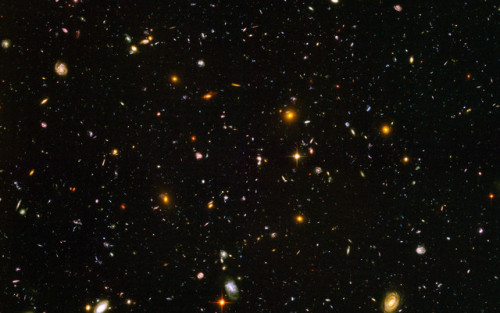
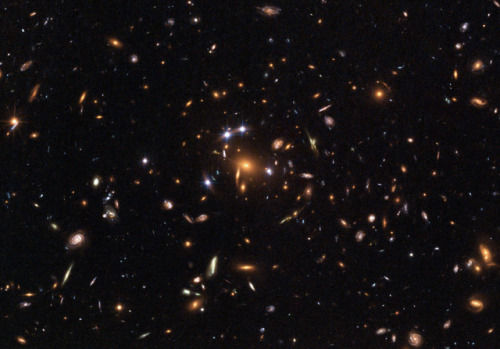


The Fermi Paradox
Once upon a time, scientists decided, “what would happen if we point Hubble at this dark piece of the sky and leave the exposure open for an absurd amount of time?” Said scientists then experienced sudden bowel incontinence from the results. Vast specks of light, like the first image and when zoomed in, each individual speck of light is it’s own galaxy with it’s own solar systems.
Seeing the sheer vastness of the universe and that it’s so large, it’s incomprehensible to our feeble minds, is it possible that we’re alone? Where are all the aliens?
The Fermi Paradox tries to describe why we seem to be alone in a vast sea of endless possibilities for intelligent life to form. Life seems to form easily, surely it’s the same elsewhere.
Here’s some main bullet point arguments as to why we’re seemingly alone.
• We’re too far apart, separated by vast space and time • We’re rare or we’re the first • The aliens don’t have advanced technology (we don’t either). Think of it this way, an octopus or a crow is intelligent life. They’ve never even visited the moon. • Mass extinctions happen more often than not, they might be dead or intelligent life never exists long enough to make contact with each other before it’s wiped out • We haven’t existed long enough to be discovered or to figure out how to find others • They’re too advanced for us • It’s simple nature of intelligent life to eventually wipe itself out • Intelligent life has discovered that it’s too dangers to be in contact • We’re not listening properly for their messages. It’s like trying to listen to a CD on a record player - it won’t work. • We’re not contacted because we’re in a simulation or an alien zoo • Maybe they’re already here, observing • Maybe they’re here (e.g. UFOs?) we just don’t know how to talk to them or acknoweldge them. We laugh at most UFO reports.

Three moons cast shadows on Jupiter.
Credit: NASA, ESA and E Karkoschka

The Rose Galaxies
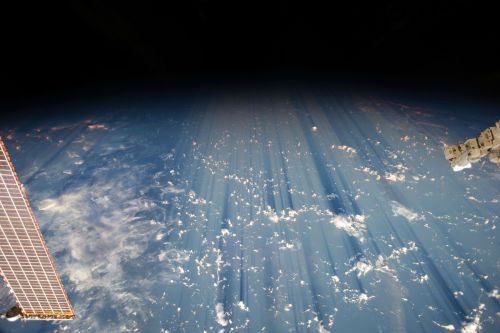
Clouds casting thousand-mile shadows when viewed from the ISS
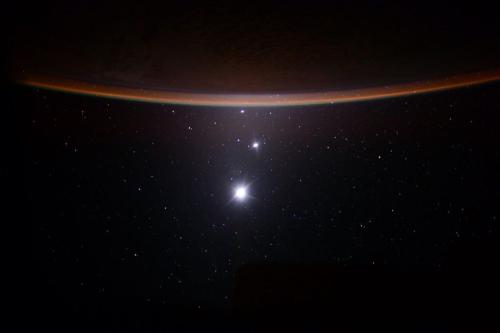
Astronaut Scott Kelly captures a Earth/Moon/Venus/Jupiter alignment from the ISS

Comet Lovejoy by Simon W

